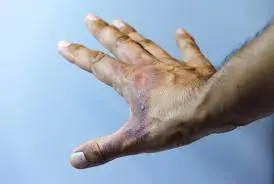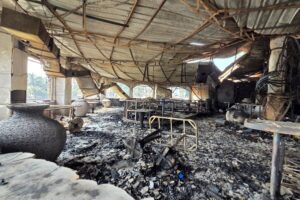Any burns or scalds must be treated as quickly as possible with the proper first aid. Your skin will sustain less harm as a result.
The following first aid procedures can be used on a burn victim, including yourself.
First Aid for burns
Burning should be stopped as quickly as feasible. This could entail getting the victim out of the vicinity, putting out fires with water, or covering them with a blanket.
Do not expose yourself to the possibility of more burning. Baby diapers and any other items of clothing or jewelry that are close to the burned skin should be removed. However, avoid attempting to remove anything that has adhered to the burned skin as this could result in further injury.
As soon as possible after the injury, cool the burn with cool or lukewarm running water for 20 minutes. Never use creams, iced water, or anything fatty like butter or ice.
Warm up, either you or the other person. Utilize layers of clothing or a blanket, but keep them off the affected region. Hypothermia, which occurs when a person’s body temperature falls below 35C, can be avoided by staying warm. This is a problem while cooling a sizable burned area, especially for young children and the elderly.
Wrap some cling film around the burn. Instead of putting the cling film around a limb, place it directly over the burn. You can use a clean, clear plastic bag to treat burns on your hand.
Ibuprofen or paracetamol can be used to treat burn pain. When utilizing over-the-counter medicines, always read the manufacturer’s directions. Aspirin shouldn’t be administered to anyone younger than 16 years old.
If you can, elevate the damaged region. It will aid in reducing the swelling.
When to visit the hospital
After completing these steps, you must determine whether additional medical care is required.
Subscribe to our YouTube channel and catch your favorite Switch TV shows
Electricity burn
Although electrical burns may not seem terrible, they can nonetheless be quite harmful. If you have an electrical burn, go to the Accident & Emergency (A&E) department right away for medical assistance.
If the individual has been hurt by a low-voltage source (up to 220 to 240 volts), such as a residential electricity supply, you should either safely turn off the power or take the person away from the electrical source using something that doesn’t conduct electricity, like a wooden chair or stick.
Avoid interacting with someone who is near a high-voltage source (1,000 volts or more).
Acid and chemical burns
Burns caused by acids and other chemicals can be extremely harmful and need to be treated right away at an A&E department.
Discover the chemical that caused the burn, if you can, and let the A&E staff at the hospital know.
Put on the proper protective gear, such as gloves, if you’re assisting someone else, and then:
Take off any contaminated garments.
Brush the chemical off their skin if it is dry.
Use running water to get rid of any remnants of the chemical from the burned area.
















